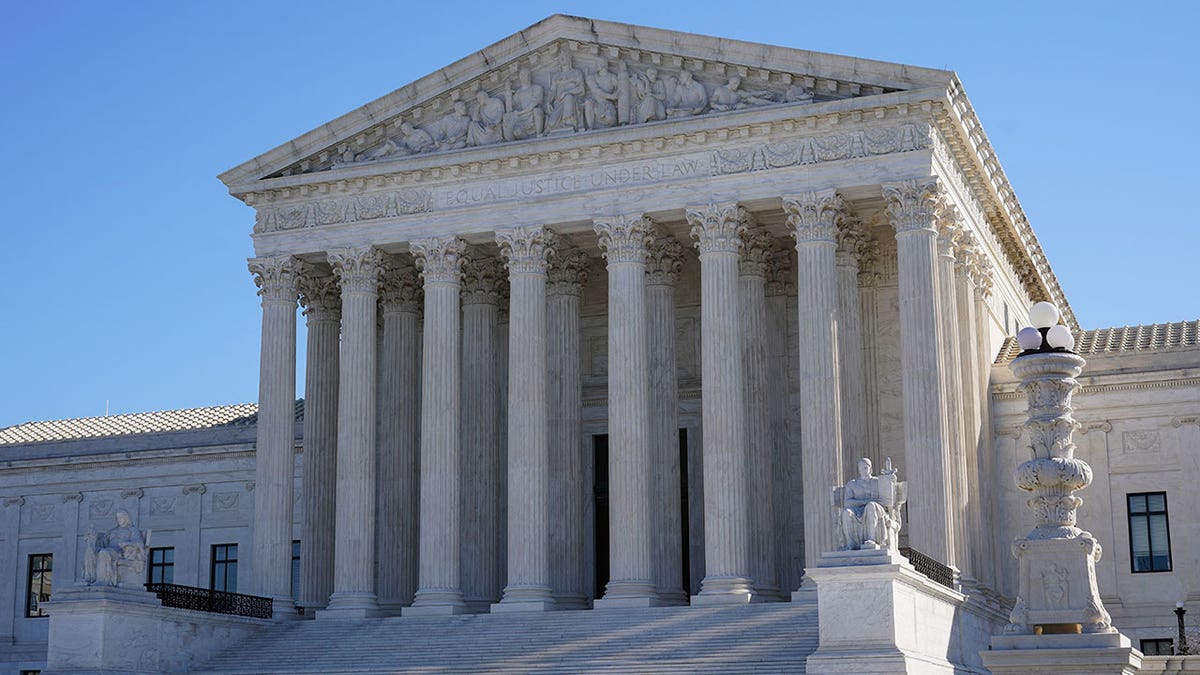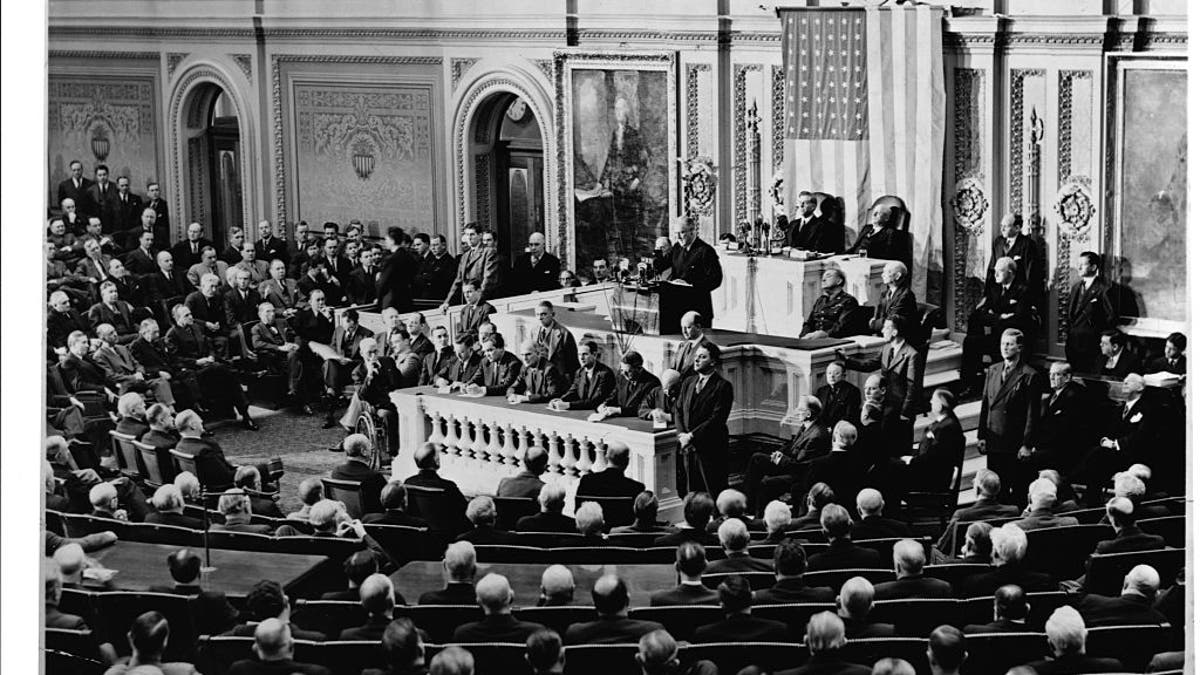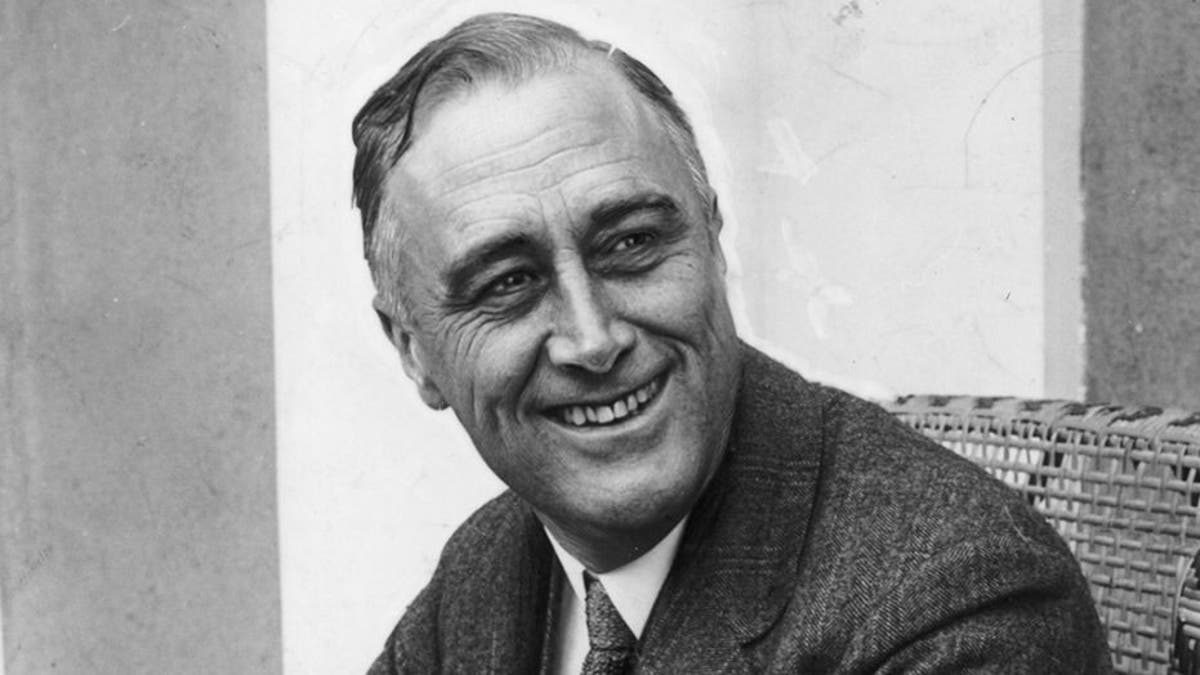Sunny Hostin accuses Republicans of 'packing the Supreme Court' to overturn Roe
"The View" co-host Sunny Hostin suggested Tuesday that Republicans were guilty of "packing the Supreme Court" to overturn Roe v. Wade.
On this day in history, Feb. 5, 1937, President Franklin D. Roosevelt announced a plan to expand the Supreme Court to as many as 15 justices.
While the 32nd U.S. president claimed the plan was to enable the highest court in the land to act more efficiently, Roosevelt’s critics said he was attempting to pack the Supreme Court, neutralizing those justices "hostile to his New Deal," as History.com notes.
The New Deal was Roosevelt's domestic program that embraced the concept of a government-regulated economy "aimed at achieving a balance between conflicting economic interests," says Britannica.com.
ON THIS DAY IN HISTORY, FEBRUARY 4, 2004, HARVARD STUDENT MARK ZUCKERBERG LAUNCHES ‘THE FACEBOOK'
The New Deal was designed to bring about "immediate economic relief" and reforms in "industry, agriculture, finance, water power, labor and housing" to respond to the woes the Great Depression had wrought, that site notes, and would greatly increase the federal government’s activities and reach.
Reacting to the ineffectiveness of predecessor Herbert Hoover’s administration to address the "ravages" of the Great Depression, American voters had "overwhelmingly" voted for the idea of a New Deal for the "forgotten man" proposed by Roosevelt, that site also says.

The Supreme Court of the United States building in Washington, D.C. (AP Photo/Patrick Semansky)
The Works Progress Administration (WPA) and the Civilian Conservation Corps (CCC) were established as part of the New Deal to "dispense emergency and short-term governmental aid" — and to provide "temporary jobs, employment on construction projects, and youth work in the national forests" in response to the Great Depression’s disastrous economic effect on Americans, Brittanica.com adds.
Buoyed by his reelection to a second term in 1936, FDR decided to approach adding to the Supreme Court by highlighting the age of the justices.
ON THIS DAY IN HISTORY, JUNE 22, 1937, FDR'S EFFORT TO PACK THE SUPREME COURT FAILED BADLY
His plan was to appoint up to six additional justices to the Supreme Court in the Judicial Procedures Reform Bill of 1937, according to History.com.
This would provide retirement at full pay for all members of the court over the age of 70.
If a justice refused to retire, an "assistant" imbued with full voting rights would be appointed — thus ensuring Roosevelt a liberal majority.
Most Republicans and many Democrats in Congress opposed the so-called "court packing" plan, History.com says.

Shown above, President Franklin Delano delivers his State of the Union address to a joint session of Congress on Jan. 6, 1941. It would be remembered as his "Four Freedoms" speech. (Library of Congress/Corbis/VCG via Getty Images)
The president's critics claimed the court-packing plan was a reaction to the previous two years, which saw the high court striking down key pieces of legislation related to the New Deal, "on the grounds that the laws delegated an unconstitutional amount of authority to the executive branch and the federal government," the site also noted.
When Roosevelt attempted to pack the court, a prominent member of his own party helped lead the successful fight to defeat it, the Foundation for Economic Education’s website says.
Roosevelt’s reorganization plan was deemed unnecessary.
Sen. Burton K. Wheeler, D-Mont., declared, in part, "Create now a political court to echo the ideas of the executive and you have created a weapon."
He continued, "A weapon which, in the hands of another president in times of war or other hysteria, could well be an instrument of destruction."

On March 9, 1933, Franklin D. Roosevelt put his signature on the Emergency Banking Act.
"A weapon that can cut down those guarantees of liberty written into your great document by the blood of your forefathers and that can extinguish your right of liberty, of speech, of thought, of action and of religion."
He continued, "A weapon whose use is only dictated by the conscience of the wielder."
In April 1937, however, before the court-packing bill came to a vote in Congress, two Supreme Court justices "came over to the liberal side and by a narrow majority upheld as constitutional the National Labor Relations Act and the Social Security Act," History.com says.
The economy had grown by enough that federal regulation and control was now warranted, the majority opinion noted.
Roosevelt’s reorganization plan was deemed unnecessary — and in July, the Senate struck it down by a vote of 70 to 22.

By 1942, "all but two of the justices" were appointees of Franklin Delano Roosevelt, the nation's 32nd president. (Getty Images)
"Soon after, Roosevelt had the opportunity to nominate his first Supreme Court justice, and by 1942 all but two of the justices were his appointees," History.com also says.
CLICK HERE TO SIGN UP FOR OUR LIFESTYLE NEWSLETTER
Roosevelt, who first took office in 1933, went on to be nominated for an unprecedented third term.
He would eventually be elected to a record four terms in office, the only president to serve more than two terms.
CLICK HERE TO GET THE FOX NEWS APP
Court-packing remains a political topic today.
Deirdre Reilly contributed reporting.
For more Lifestyle articles, visit www.foxnews.com/lifestyle.





















